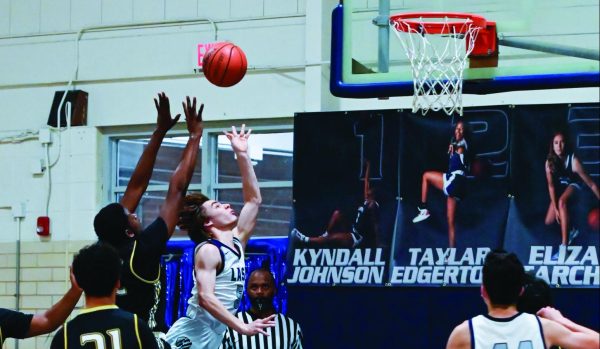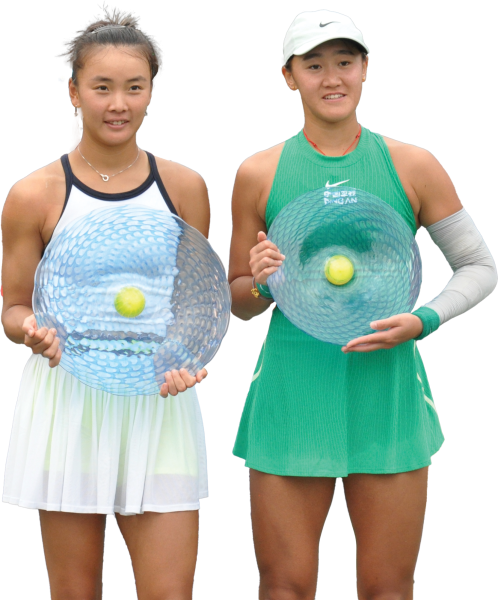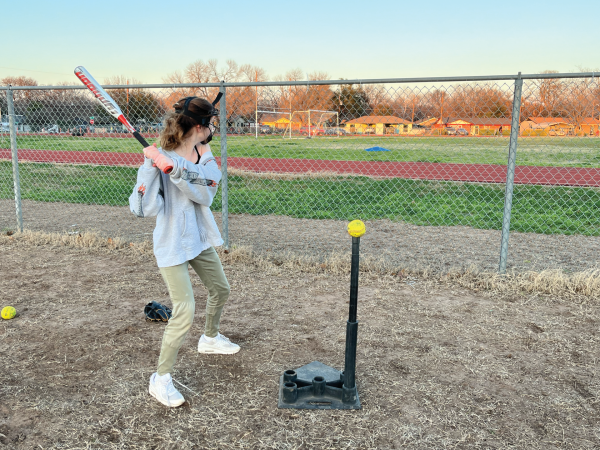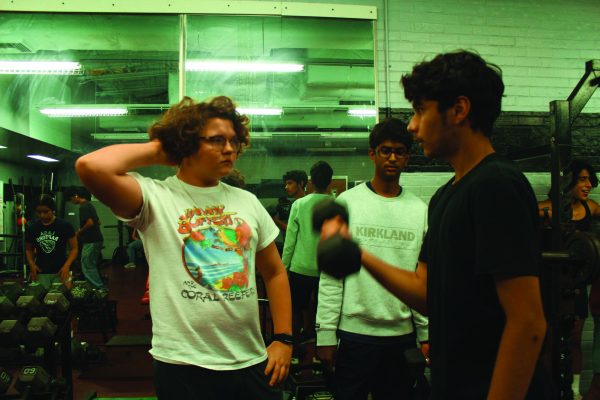Roles of Masculinity and Femininity in Athletics
April 14, 2021
Throughout the history of sports, discussions about how the common stereotypes and roles associated with masculinity and femininity impact athletes and their dynamics have been at the forefront of athletics.
Jack Cunningham teaches Great Ideas, a class that studies humanities and the connections between gender, sex and society, at LASA and is an assistant coach for the track and cross country teams. According to Cunningham, one impact that these roles have on athletics is the amount of attention given to traditionally male sports versus traditionally female sports.
“Here in Texas, a lot of attention goes to boy sports,” Cunningham said. “Football is an obvious example. We pour a lot of money and attention and resources into football, which is very close to being played exclusively by boys.”
According to girls soccer coach and Great Ideas teacher Chloe Cardinale, there is a definite difference in attention between male and female sports. Cardinale said this difference in attention also affects the amount of revenue generated for each league or athletic administration.
“The hype surrounding it is just different,” Cardinale said, “and obviously, the more fans you have, the more revenue is generated, and that hurts when you don’t get that. It hurts the program, and trying to up that visibility, I think, is really important.”
Cardinale also mentioned that Title IX wouldn’t exist if gender inequality wasn’t pertinent. Title IX is a federal civil rights law that prohibits discimination against any sex within an education system or in any activity that recieves federal financial assistance.
“The fact that Title IX exists is the best example, the way we have to ensure that female sports get the same funding and the same resources and access to facilities and time,” Cardinale said. “And obviously, if we look at the women’s soccer league, the way that they don’t receive the same salaries is also an example of that.”
Male and female athletes who are playing the same sport professionally are paid disproportionately different salaries. Lyssa Lashus, a freshman on the basketball, volleyball, and track teams, explained why the salary difference between genders is unfair.
“If you look at salary differences, there are huge and very unfair differences in the gender pay gap within people who play the same sport,” Lashus said. “That’s really horrible to see because they should be getting the same pay. It doesn’t matter if they’re a boy or a girl, they’re playing the same sport, they have the same job, eventually, there’s no reason why they should be paid less.”
There are many examples of women’s professional sports teams that are paid less than their male counterparts. According to Cunningham, there’s also a difference in perception around bigger sport leagues that are male-dominated.
“You have the NBA, Major League Baseball, the NFL, all these big-time sport leagues that are all exclusively male,” Cunningham said. “WNBA players make much, much less than NBA players. They get less attention, and they’re made fun of for being in women’s basketball. Certainly, there’s a difference in perception, especially around those bigger sports.”
The roles associated with masculinity and femininity also affect LGBTQ athletes around the world. New issues surrounding the rights of LGBTQ athletes show up frequently in professional, high school and collegiate athletics. Cunningham explained that one of the newest of these issueshas been whether to allow transgender athletes to participate in sports in the gender they transitioned to.
“There’s a conversation right now around allowing trans students to participate in sports in their own gender, and a lot of transphobic, ignorant messages are spreading around,” Cunningham said. “That’s kind of a newer issue that has popped up concerning how LGBTQ students are treated within athletics.”
Cunningham explained that there is one central argument being made to undermine transgender girls’ participation in sports. There’s a perception that letting transgender girls play in women’s sports is unfair because they were born with more testosterone than cisgender girls.
“If you have a trans girl competing in women’s sports, there’s a perception that that is unfair because there are some things biologically male about that person, and having them compete in women’s sports is an unfair advantage,” Cunningham said. “I don’t agree with that view, of course, but that’s the argument that people who want to limit trans people’s right to play sports use.”
When it comes to LGBTQ and women in sports, Megan Rapinoe comes to mind for Cardinale. She is a two-time World cup Champion for the United States women’s soccer team.
“There has been a lot of support for LGBTQ rights and advocacy, and obviously, Megan Rapinoe has been big on that,” Cardinale said. “So I think bringing prominent athletes into the spotlight to advocate on behalf of that is really important.”
Many have tried to find the root cause of gender inequality surrounding athletics. Cardinale explained that it’s a product of history and culture.
“People defer to tradition on how things have always been done, and so to go outside of that is difficult for people,” Cardinale said. “It can be done, it’s just not the norm, so it’s a lot harder to be the first person or to try and break those boundaries down. We’re progressing, decade by decade, but it’s slow.”
Lashus explained that gender inequality also comes from the stereotypes surrounding gender norms in athletics. According to Lashus, these stereotypes come from our history and shape the way we view athletics today.
“If you go back 50 years even, girls, women, they were not really seen as supposed to be exercising or playing, kind of like the stereotype with how girls are supposed to play with dolls while boys get a soccer ball,” Lashus said. “Football, basketball, soccer, all of those sports are very male-dominated, and there’s been a lot of struggle with their influence for women in history who have tried to open up those sports more to girls.”
According to Cunningham, gender inequality is a bigger problem than just individual prejudices. Societal prejudices that affect women’s athletics also affect LGBTQ athletes in sports.
“The gender inequality that remains today is a product of our history, a product of patriarchal culture and traditions and ways of doing things,” Cunningham said. “A lot of gender inequality comes more from our history and from what elements of our history have remained in our culture. I don’t necessarily think that whatever biological differences there are between males and females explains the inequality between genders. I also don’t think that it’s a matter of individual prejudices. I think it’s a bigger problem than that; it’s a societal problem.”










